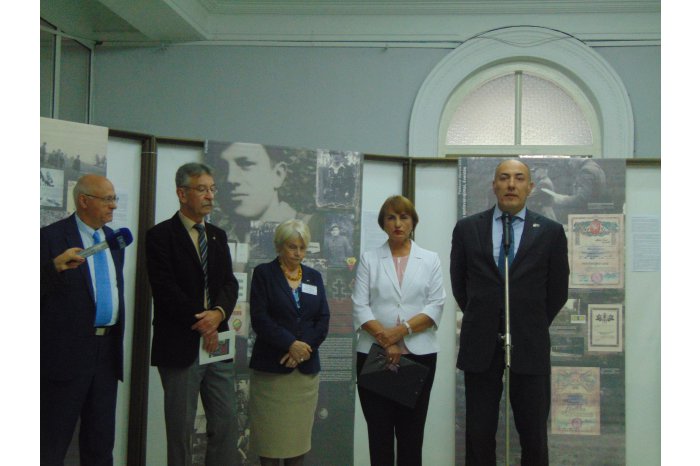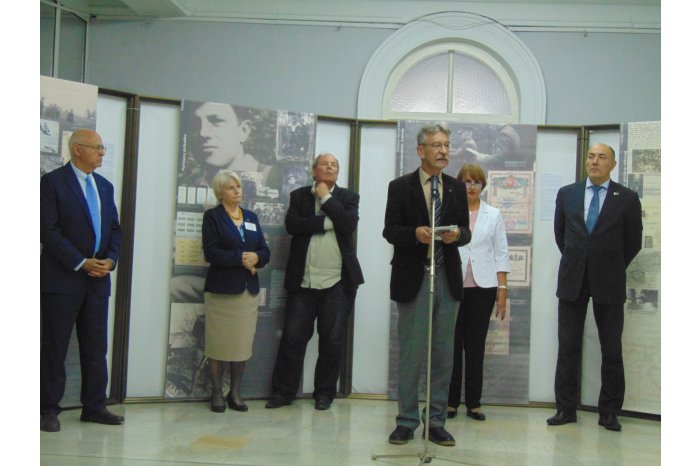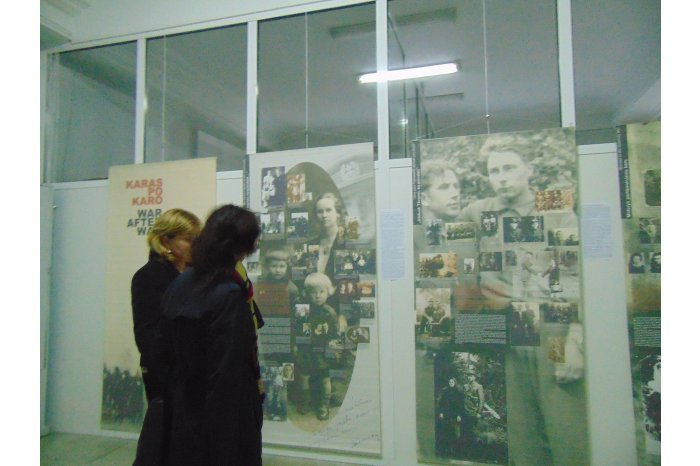Exhibition dedicated to anti-Soviet armed resistance in Lithuania inaugurated in Moldovan capital
19:46 | 19.10.2018 Category: Culture
Chisinau, 19 October /MOLDPRES/ - An exhibition of photos and documents of the Museum of Occupations and Freedom Fights of the Genocide and Resistance Research Centre of Lithuania titled, War after War. Armed Anti-Soviet Resistance in Lithuania in 1944-1953, was inaugurated at the National History Museum of Moldova today.
The event was organized by the aforementioned museum from Moldova, in cooperation with the Embassy of Lithuania in Chisinau, within the state programme, Historical recovery and turning to account of the memory of the victims of the totalitarian and Communist regime in the Moldovan Soviet Republic during 1940-1941 and 1944-1953.
Attending the event, Lithuanian Ambassador to Moldova Kęstutis Kudzmanas said that the anti-Soviet resistance movement from 1944-1953 had been an important stage in the fight for the independence of Lithuania.
According to the diplomat, after the end of the Second World War, a new national war started, which concerned the re-establishment of the independent Lithuanian state. Thousands of people went to woods, hoping that they will not have to stay there for too much time, till the decisions of the peace conference’s were taken, which was to implement the principles of nations’ self-determination. “Unfortunately, their expectations were not fulfilled, and during nine years, between 1944 and 1953, Lithuania waged its own war, practically alone,” Kęstutis Kudzmanas said.
In the context, the director of the Genocide and Resistance Research Centre of Lithuania, Terese Birute Burauskaite, said that, in 1945, about 30,000 partisans had lived in Lithuanian woods, led by former officers, teachers and students. Teams of partisans were set up, which had up to 200 men and the battles with the Soviet army were looking like military conflicts between regular armies. In the first two years of resistance, in 1944-45, about 10,000 partisans were killed and the overall number of the dead stood at more than 20,000. Over 50,000 persons participated in the guerilla war, about 140,000 people were incarcerated and 118,000 were deported.
In February 1949, Terese Birute Burauskaite said, after five years of fight for freedom, the highest authority of the partisans was created, Presidium of the Council of the Lithuanian Freedom Fight Movement (LLKS). All leaders of the partisans on the territory of Lithuania, who participated in the constituent assembly, became subordinated to this authority. The political declaration of the Council of the Lithuanian Freedom Fight Movement, a legal act which presently is part of the Lithuanian juridical system, united Lithuania in 1918 and in 1990.
According to university professor Anatol Petrencu, Lithuania pays great attention to the recovery and turning to good account of the memory of the victims of the totalitarian and Communist regime. He added that, for instance, the former headquarters of the KGB in this country had been transformed into a museum.
The exhibition will be opened till 5 November.
(Reporter N. Roibu, editor A. Raileanu)



